- News
- Reviews
- Bikes
- Accessories
- Accessories - misc
- Computer mounts
- Bags
- Bar ends
- Bike bags & cases
- Bottle cages
- Bottles
- Cameras
- Car racks
- Child seats
- Computers
- Glasses
- GPS units
- Helmets
- Lights - front
- Lights - rear
- Lights - sets
- Locks
- Mirrors
- Mudguards
- Racks
- Pumps & CO2 inflators
- Puncture kits
- Reflectives
- Smart watches
- Stands and racks
- Trailers
- Clothing
- Components
- Bar tape & grips
- Bottom brackets
- Brake & gear cables
- Brake & STI levers
- Brake pads & spares
- Brakes
- Cassettes & freewheels
- Chains
- Chainsets & chainrings
- Derailleurs - front
- Derailleurs - rear
- Forks
- Gear levers & shifters
- Groupsets
- Handlebars & extensions
- Headsets
- Hubs
- Inner tubes
- Pedals
- Quick releases & skewers
- Saddles
- Seatposts
- Stems
- Wheels
- Tyres
- Health, fitness and nutrition
- Tools and workshop
- Miscellaneous
- Tubeless valves
- Buyers Guides
- Features
- Forum
- Recommends
- Podcast
review
£36.00
VERDICT:
If you run tubeless with sealant, on or off-road, you want this kit. It's design and engineering par excellence
Weight:
95g
Contact:
At road.cc every product is thoroughly tested for as long as it takes to get a proper insight into how well it works. Our reviewers are experienced cyclists that we trust to be objective. While we strive to ensure that opinions expressed are backed up by facts, reviews are by their nature an informed opinion, not a definitive verdict. We don't intentionally try to break anything (except locks) but we do try to look for weak points in any design. The overall score is not just an average of the other scores: it reflects both a product's function and value – with value determined by how a product compares with items of similar spec, quality, and price.
What the road.cc scores meanGood scores are more common than bad, because fortunately good products are more common than bad.
- Exceptional
- Excellent
- Very Good
- Good
- Quite good
- Average
- Not so good
- Poor
- Bad
- Appalling
The milKit Tubeless Valve and Refill kit makes tubeless tyre filling, checking and changing a mess-free doddle. If you run tubeless, on or off-road, you need this.
It's a pretty safe bet that unless you've been hiding under a rock for the last year you'll have heard of 'road tubeless' tyres. Tubeless means there's no tube inside your tyre to hold the air, so you're reliant on a rim, tyre and valve that work together as a system to keep the air in.
> Find your nearest dealer here
The main benefit is that, because your tyre is much, much tougher than a thin inner tube, 'snakebite' punctures – where the inner tube is smashed between the metal rim and the edge of say a pothole or rock – are a thing of the past. And because you aren't fussed about snakebites you can run lower pressures, meaning less rolling resistance, more grip, and a lot more comfort.
Tubeless tyres are also built tougher to resist punctures from thorns, flints or glass. As a final level of protection, most people use a dollop of sealant to flow into any puncture hole and seal it from the inside out.
The most popular and effective sealants are latex-based, but here's the problem: liquid latex doesn't like air, and it really doesn't like carbon dioxide from inflators. So after two to six months, depending on the brand used, humidity and temperature, the latex sloshing around inside your tyre will most likely have dried into something resembling congealed alien snot. (The bits people spend hours picking off their tyres and rims aren't called 'boogers' for nothing.) Technology is advancing, and there are a few brands on the market that claim to be latex-free and not to dry out. They have compromises of their own, so for now it's pretty much latex as the go-to sealant.
But how do you know what the sealant is like inside your tyre? How do you know if there's enough still in liquid form to effectively seal a decent puncture, or maintain a good rim seal? If only there was a way of checking and topping up the sealant without taking the tyre off or needing a compressor to re-seat it...
Credit Swiss
The milKit system was devised in Switzerland to do just this, after a mountain bike ride in Moab, USA was cut short due to a flat tyre and dried-out sealant. The founder, Pius Kobler, teamed up with entrepreneur Sven Rizzotti and went to crowdfunding site Indegogo last year. They hit the jackpot and blew through their $25k funding target in a month, with hundreds of cyclists keen to solve a universal problem.
Thus the milKit tubeless system was born. (We first reported on this as they were seeking funding back in April: see here.)
The kit contains a large clear plastic syringe, holding 60ml or 2oz of fluid. There are two thin plastic tubes, one with an on-off tap that screws into the syringe, the other with an angled end, plus two special rim valves and a valve core remover tool. The valves have sufficient threaded length to fit a rim that's 22mm or less in depth, from where the rubber hits the rim bed to the spoke surface (milKit plans to release a 'road specific' valve that will suit deeper rims).
All this including the valves comes ingeniously packaged within the plunger of the syringe itself, so after first use you can sling the lot into a toolbox or kitbag without losing bits. Extra valve pairs cost £19, which is a slight premium over the £10-£15 you pay for other 'non-self-sealing' tubeless valves.
The valves go onto your tubeless-ready rims easily enough, tightened 'only slightly'. On the inside end of the valve body there's a one-way rubber 'flower' with four 'petals', that closes itself and effectively seals the bottom end of the valve body, even with the Presta valve core removed. This is the cunning genius of the milKit – how to measure and top-up sealant that is designed to clog small holes, without passing it through the very, very small hole that is a normal Presta valve, without letting all the air out when you remove the valve core. When the Presta valve core is removed, the air stays inside the tyre thanks to the rubber petals on the end of the valve body inside the tyre.
When you want to measure or refill, you slip the thin plastic tubing attached to the syringe inside the now-open valve body, it then pushes through the rubber petals, down until it hits the bottom of the tyre and, hey Presta! (sorry), you have access to the inside of the tyre and all of the sealant. This is why the tube end is cut at an angle – so it can suck every drop of sealant up when pressed against the bottom of the tyre.
The Presta valve core has a plastic extension on the bottom, so when it's installed and depressed it pushes the rubber petals apart to let air out. The rubber petals also keep sealant from flowing into the valve core and blocking the Presta bit. (You can see all this on the video.)
Spill checker
In practice it works amazingly well. I've checked and topped up sealant levels, and also drained almost all the sealant out for re-use without spilling a single drop or losing much air pressure.
It is critical to follow the warnings and check tyre pressure is not above 22psi before using the syringe, and also to have the on-off tap closed when first inserting the tube into the valve. I learnt the hard, messy way (and to the immense comedic satisfaction of my Twitter followers), when late one evening after two too many workshop beverages I inserted the tube into a sealant-loaded 28mm tyre still at 60psi, with the tap open. The resulting explosive decompression of the tyre forcing 2oz of sealant back through the syringe, propelled the plunger clear across my garage, and coated everything within a 3m radius, self included, in a fine spray of sealant. RTFM, folks. And easy on the fettling refreshments.
Assuming you can follow 36 words of clear instruction, the experience of inserting the tube, opening the tap, seeing the sealant flow up into the syringe under its own power, inspection, and re-insertion (possibly with a subsequent injection of some extra) is rather magical.
The design allows you to turn off the tap, remove the syringe to suck some extra sealant up from a cup, then re-attach to the tube for insertion.
One of the most popular sealants is the latex-based Caffélatex. The manufacturer, Effetto Mariposa, recommends checking Caffélatex every two months, to make sure it's liquid and therefore retains its 'puncture preventive' action. Effetto Mariposa also sells a syringe and tube, but it's for injecting only, and doesn't allow for removal/checking of the quantity/quality of sealant remaining. Again, this is the beauty of the milKit system – check/top up in one go, in less than a minute, without disturbing the tyre/rim seal or even fully deflating. Effetto Mariposa's owner says the milKit is 'a very helpful addition to the tubeless technology'.
At £36 for a plastic syringe and two valves, some will no doubt suggest there's a bit of extracting the Michael going on. The Effetto Mariposa latex injector syringe kit is 'only' £10 – but that's to miss the point. What you are getting with milKit is a system – one that supports not only insertion, but easy and fast checking, replenishment and removal. Given that a decent tubeless tyre alone is £50, the £36 one-off cost for the ability to maintain your tyre system easily and cleanly is, to my mind at least, a no-brainer.
Verdict
If you run tubeless with sealant, on or off-road, you want this kit. It's design and engineering par excellence
road.cc test report
Make and model: Milkit Tubeless Valve Refill Kit
Size tested: n/a
Tell us what the product is for, and who it's aimed at. What do the manufacturers say about it? How does that compare to your own feelings about it?
The milKit is for anyone running tubeless tyres, on- or off-road, who uses sealant.
Milkit says:
CLEAN, SAFE AND SIMPLE
Fast: Measure and refill sealant without deflating the tire
Clean: A rubber flap prevents sealant from filling and blocking the valves
Reliable: No more guessing games. Riders will always know exactly how much sealant is needed
Simple: Clean hands and easy to use
Tell us some more about the technical aspects of the product?
It's a collection of tubes and a syringe. It's not overly technical.
Rate the product for quality of construction:
9/10
It's Swiss engineering, so of course it's very, very nicely done.
Rate the product for performance:
10/10
Used correctly, it does its job perfectly.
Rate the product for durability:
8/10
It's robustly made for what it does, and I can't foresee any longevity issues.
Rate the product for value:
9/10
Given the milKit will save you wasted sealant and time checking/resetting tyres, it's great value.
Tell us how the product performed overall when used for its designed purpose
Can't fault it. Perfect.
Tell us what you particularly liked about the product
How everything works together perfectly.
Tell us what you particularly disliked about the product
Nothing.
Did you enjoy using the product? Yes
Would you consider buying the product? Yes
Would you recommend the product to a friend? Yes
Use this box to explain your score
It's very hard to criticise; I could have marked it down for want of a more robust syringe, or idiot-proof blowback prevention – and not everyone will want to pay £36 – but to my mind it's an exceptional product.
About the tester
Age: 42
I usually ride: Charge Juicer My best bike is:
I've been riding for: Over 20 years I ride: A few times a week I would class myself as: Expert
I regularly do the following types of riding: club rides, general fitness riding, fixed/singlespeed, mountain biking, and Dutch bike pootling
Living in the Highlands, Mike is constantly finding innovative and usually cold/wet ways to accelerate the degradation of cycling kit. At his happiest in a warm workshop holding an anodised tool of high repute, Mike's been taking bikes apart and (mostly) putting them back together for forty years. With a day job in global IT (he's not completely sure what that means either) and having run a boutique cycle service business on the side for a decade, bikes are his escape into the practical and life-changing for his customers.
Latest Comments
- mark1a 2 sec ago
Easy to say, but who made the devices you are using to say this?...
- lonpfrb 1 hour 59 min ago
He has misogynistic form for calling women of intellect and integrity; Attorneys General, Judges, Bishops, 'Nasty' since the narcissistic sociopath...
- Freddy56 2 hours 4 min ago
I have a 10 year old set of shamals and a 20 TWENTY! year old set of Zondas still going strong.
- Freddy56 2 hours 5 min ago
I have these in the photochromic option for winter and they are light and fast acting. Happy with the purchase.
- Rendel Harris 2 hours 46 min ago
Do enlighten us with yours. If you think that refusing to take the British national women's champion to compete in the class in which she is...
- Simon E 3 hours 10 min ago
Not forgetting the 5p 'temporary' cut in 2022, resulting in an estimated £3 billion of lost revenue each year....
- ChrisA 4 hours 48 min ago
You want solar panels? Yours for €1659. https://widepathcamper.com/spare-part/428629/solar-cell-kit-complete-wit...
- Beachboy 5 hours 26 min ago
If you want to see a real demonstration, albeit on social media from kick ball fans, tell them you are keeping the trees but making the road a...
- CyclingGardener 6 hours 15 min ago
My very first LED front light - a present, so possibly expensive - proudly stated that it was visible half a mile away or something, then in the...
- hawkinspeter 6 hours 52 min ago
Thanks, but I'll give Xitter a miss. I never used Twitter back in the day (well apart from an account for automated alerts on servers), but I...







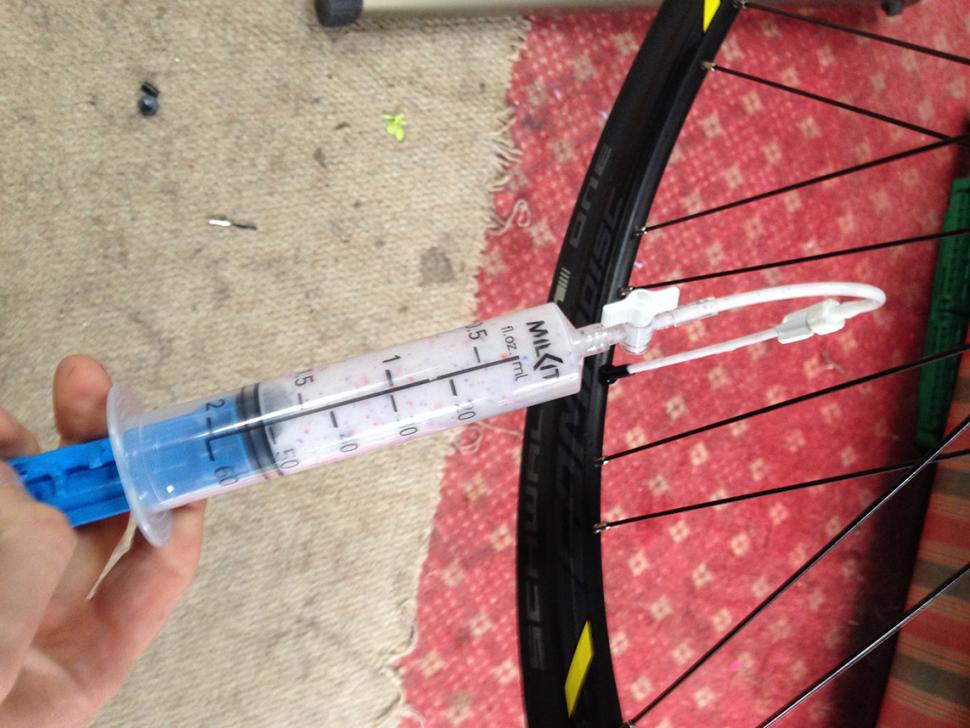
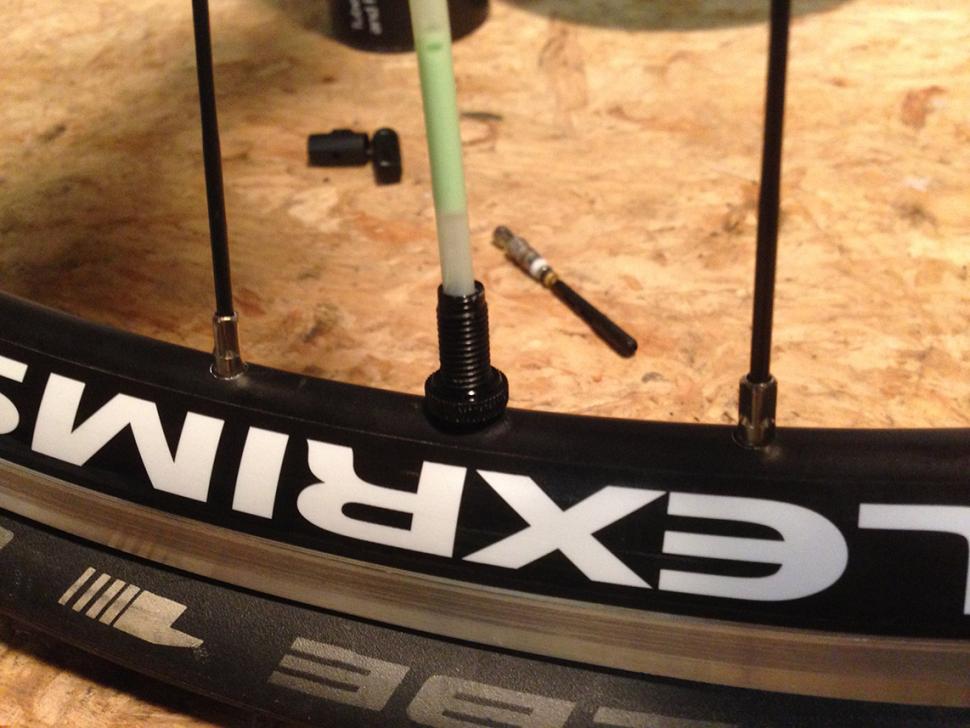
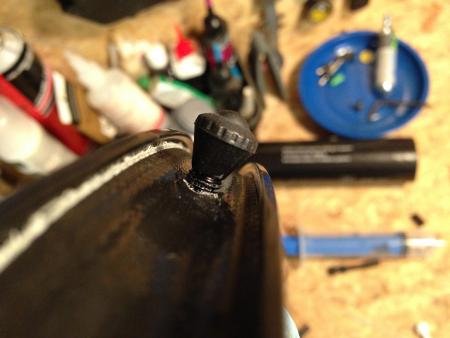

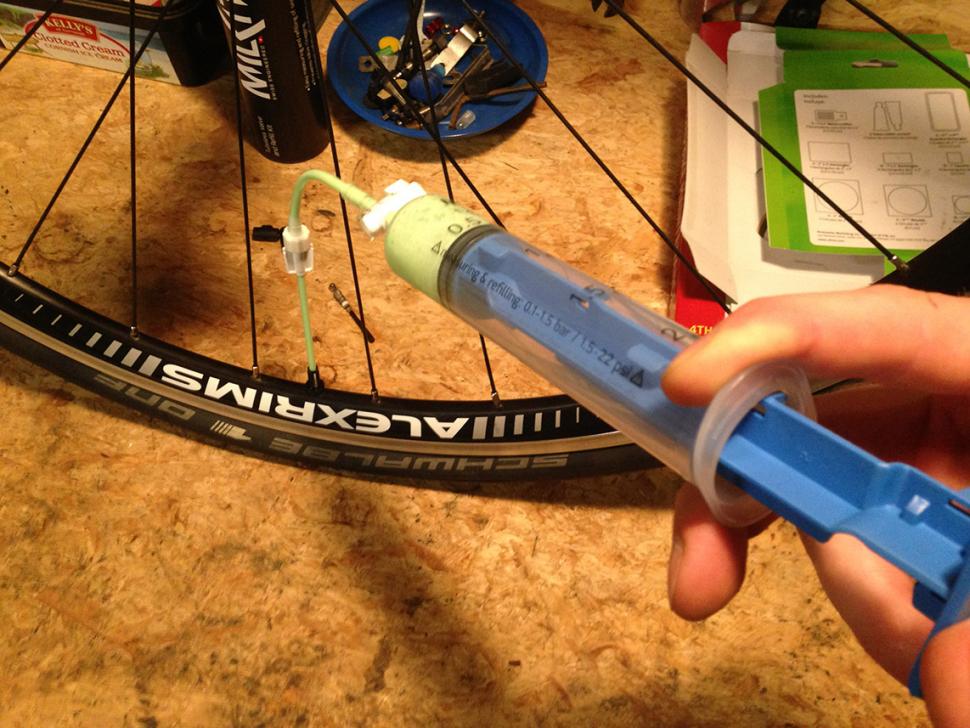

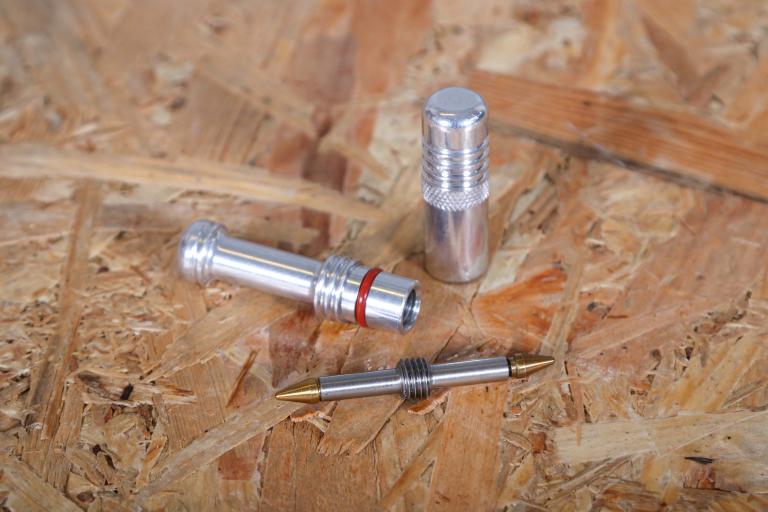
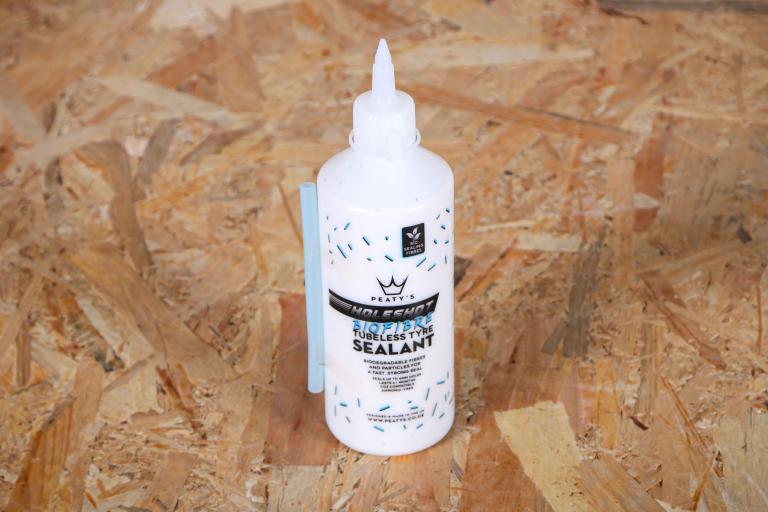
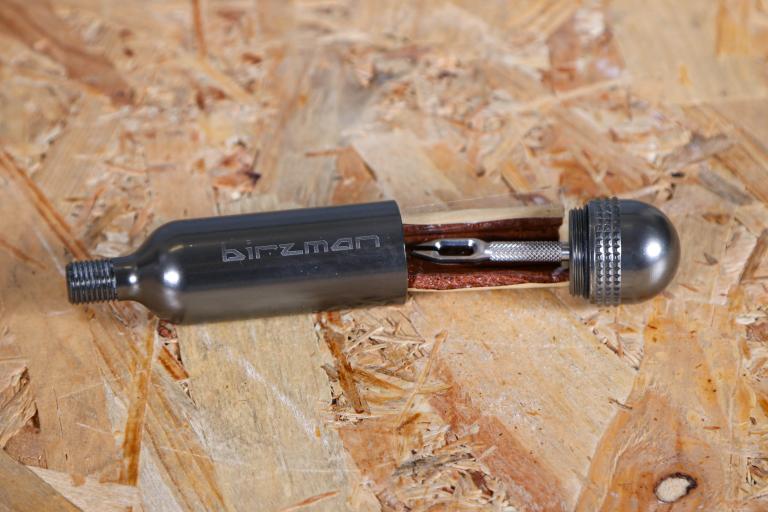
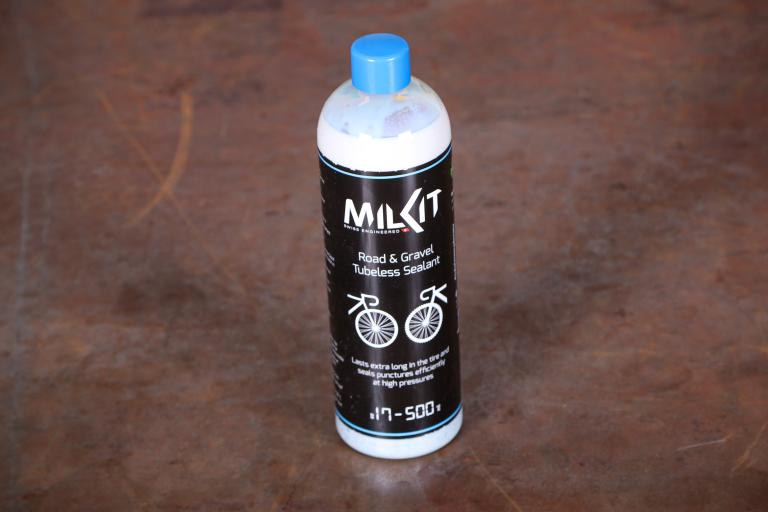
Add new comment
31 comments
This system only saves you from deflating your tyre completely (you still have to lower the pressure to <20psi though). So instead of taking 6 minutes to check your sealant, it's gonna take 5. You can check the sealant without unseating your tyre using any syringe thin enough to be inserted into a regular valve with the core removed.
Also, deflating your tubeless tyre completely will no unseat the bead.
So this system solves no real problem but presents two that may be significant: 1) it uses a proprietary valvecore, 2) you cannot inflate the tyre with the Milkit valve core removed (you may want to do that when using a compressor to seat your new tubeless tyre).
The valve core isn't anything that unusual - it's a normal core with a long pokey bit on it to push open the seal at the bottom for deflation. You could get away with using a normal valve core and carry a thin enough stick (e.g. the thin tube end of a tubeless syringe) for if you need to deflate it.
I'm not seeing the difference between a Milkit and other valves when the core is removed, but then my pump doesn't fit, so haven't tried inflating without a core.
As a roadie of 40+years I changed to tubeless about 18months ago, and would never go back because of the improved ride quality and lack of punctures (and no significant increase in weight using the excellent Schwalbe Pro Ones). But I've twice taken tyres off to find clear fluid with no liquid latex inside, just solidified lumps due to my leaving it too long. The Milkit system has changed all that - I can check and replace as often as I want and it takes just literally a couple of minutes. It works fine with Stans Race sealant too, in spite of both Milkit and Stans saying it doesn't. I also mount new tyres dry now, then add the sealant after inflation, which makes the whole process quick and free of any mess. For me, Milkit has taken the hassle, mess, and insecurity out of tubeless and I'd highly recommend it to anyone using tubeless on their road bike.
"I also mount new tyres dry now, then add the sealant after inflation, which makes the whole process quick and free of any mess."
You can mount new tyre dry without this Milkit valve: 1) inflate tyre to seat it onto wheel, 2) deflate completely, 3) add sealant through valve with core removed, 3) inflate tyre. Done.
"But I've twice taken tyres off to find clear fluid with no liquid "
Why did you need to take your tyre off to check the sealant? You can use any syringe thin enough to be inserted into a regular valve (you can find them on Amazon).
Does this design and method also mean that the presta valves do not clog up? Such as with Stans race sealant which is said to have to be tipped in, rather than inject with normal tubeless valves and syringes (apparently it will clog up the valves due to larger crystals).
You remove the presta valve core first - no sealant will get through a valve. The whole idea is the system holds air even with the valve removed.
Perfect thanks for confirming, that was how I viewing it.
I am interested in this product, but perhaps someone can tell me why this is better than a home brewed solution: simply letting all your air out of the tyre, removing valve core, then using your own syringe and small rubber tube to suck up the sealant and refill to the desired level. The only different is that Milkit doesn't require all the air to be let out (0-20psi is OK). What am I gaining by not letting all the air out?
Soz, been away. OK. Not letting all the air out is a big thing for many tubeless setups. Life is getting easier and many combos of rim/tyre will now go on quite nicely using a trackpump. But not guaranteed. if it were a pig to get on, up and sealed, you will probably be very happy paying £35 once for never having to re-seat the tyre every few months.
The whole process is really quite nice, clean &...well...Swiss.
Fair enough - I've just checked my sealant levels on my road tyre. I had initially put 60ml in and now only have 30ml left - the rest has either hardened, gone into sealing the bead or leaked, filled micro-holes in the carcass or of course sealed a puncture I didn't know about. Needless to say I put another 30ml in to the tyre. The process involved my removing a part of the tyre, sucking the fluid out with a syringe to measure, topping it up and then reseating the tyre. Not rocket science but a bit messy. Enough of a PITA that it discourages me from checking the fluid level, so I'd certainly give a product like this some consideration. The only think holding me back though is that my rims are 27mm - I am sure there are many with deeper rims - and this product seems best with 22mm or less. Have you any experience with rims of this depth? I'll keep an eye on whether they bring out a deeper valve.
The valves have sufficient threaded length to fit a rim that's 22mm or less in depth, from where the rubber hits the rim bed to the spoke surface. A ruler is your friend
To answer my own question a year on. I finally bought the product (my rims claim to be 27mm deep - the 35mm valves work fine with them, though I wouldn't go with rims too much deeper). All I can say is that I should have bought it a year ago. It is quite simply the quickest, cleanest way to work with sealant. Checking sealant levels is a 5 minute job if that. So clean I can do it inside. No other technique I've tried comes close to being this painless, clean and quick.
Throw on a pair of Schwalbe Pro One Tubeless Easy, draining the sealant out of an old tyre, removing it and putting on a new one, seating the tyre and refilling that with sealant was honestly less hassle than replacing a tube and certain brands of non-tubeless tyres in the past. If every tubeless setup used Schwalbe's Tubeless Easy tyres and this Milkit device, tubeless tyres wouldn't have a reputation for being a hassle to setup or maintain.
Call it a day on someone who doesn't know you not being able to quantify exactly how much 'faff' you would save with tubeless tyres?
Yeah, that's probably for the best...
Is it really such a hassle to carry a spare tube?
Nope - but stopping and patching or swapping tubes is a pain and if you spend any time off tarmac you normally have a choice of pinch flats or tyre pressure which is too high - tree roots on single track is a good case in point. Even on tarmac, with wider tyres I prefer to lower the pressure over other choices for a variety of reasons and that increases the risk of pinch flats (last puncture I had was one, wide, shallow but sharp-edged pot-hole appeared very quickly from under the car in front and I didn't have time to avoid it). When I took my tubeless tyres off the old bike I could still see 4 or 5 sealant pin-heads for I was quite grateful I didn't have to stop and fix (commuting then). Were there more ?... perhaps, don't know, but never had to stop on them and they had quite a bit of abuse.
The current clinchers (Vittoria Open Pave) have had no penetration punctures in the last ~3,500km and just the one pinch flat, so that's good. That said, i'm more careful with them than the tubeless tyres and don't do as much on gravel, single-track, fire road etc - but who knows. I'd still prefer to go tubeless with the right tyre, but they're not cheap so i'll wait until I have to replace the Vittorias before decided.
As for cost, I first set up tubeless for about £ 150 - hardly used, second hand Bontrager Race TLRs for about 80 quid (better than my old wheels and probably worth the cash to me in general, tubeless or clincher), 15 on rim strips and valves, 40 on some Hutchinson TLR tyres (2 used, 1 new) and a tenner or so on sealant. I hear people talking about spending 'hundreds' on converting and, of course, you can - same as anything on a bike - but you don't have to and increasingly bikes are being fitting with TLR wheels anyway.. which is perhaps how it will increasingly become the way people get to try it and see if it's what they want. Not for everyone, but that's fine - it works for others and no amount of nay-saying is going to change that. Just ride how you want, where you want.
Shame Stans kit doesn't do this as standard but hey ho.
PS In the UK the only palce you can buy it for now is Amazon.
http://www.amazon.co.uk/milKit-7629999029255-compact/dp/B00YFRT8KM?tag=o...
I have this kit sitting on my desk. I'll install it at some point soon. Went tubeless in November and rode to Ghent with two friends, weather was biblical, we had mud, cobbles, everythign bad for tyres. Bothe my friends had three punctures each to my zero. The confidence it inspires riding cobbles is enough for me.
I also went out with my tyres at a stupidly low pressure at the weekend (left my pump somwhere else), which i'd never had done with tubes.
Maybe it's 2-4 months for the sealant to dry out in warmer climes but up here mine lasted a full 12 months. I know 'cause I removed bead on tyre expecting lumps, but found liquid. Needless to say this exposure made it solidify not long after. Maybe that job would've been made easier with this kit... still, too pricey.
Tubeless is better. I'll never go back (although I have one bike that doesn't have tubeless - no punctures in two years on that one either.
Buying good quality tyres and tubes may mean buying tougher, heavier ones. I use virtually diaphanous Hutch Atoms on two bikes with Stans gloop and they are so far (three years) fault and puncture free.
They are a bugger to fit to Fulcrum 3 alloy rims but just dropped onto carbon Reynolds - I don't know why. I take the tyres off once a year and lovingly peel away the semi solidified stuff (It's very theraputic...) and start again. I carry a small amount of gloop to add if necessary (not yet) and a £20 note for a taxi if I have any kind of major issue. I carry a CO2 inflator but no spare tube or tyre so maybe save weight overall although I imagine the previous night's curry is a bigger weight penalty anyway.
Added to KiwiMike's points: tubeless tyres rarely deflate catastrophically too - that was a major plus point for me, especially as I'm told I'm wasting my time wearing a helmet.
Too much faffing about. Just too much faffing about. I'm sticking with tubes until somebody simplifies this rigmarole.
...because bent over in a layby in the wind/rain with numb hands covered in brakepad paste whilst swearing at snapped levers/hidden thorns/greasy chains isn't a faff at all
I'm sure being bent over in a layby etc: etc: is a real pain but I can't remember the last time it happened. I buy high quality tyres and tubes, I keep them inflated to a reasonable pressure and every now and then I remove any flints. I shouldn't tempt fate by saying this, but my last flat was almost a year ago and was caused by a mighty thorn that would have felled a mule.
Exactly how much faff could you save me?
I'll see your lucky non-flinty clean-roads anecdote and raise you a conspiracy theory that the tens of thousands of people switching permanently to tubeless, the near-permanent shortage of stock as a result, and the endless positive reviews are all 'marketing', drummed up by an industry desperate for fools like us to give them cash.
So as it's all hype and laffs, no faff at all. As you were, and please don't listen to *anyone* who says tubeless is better
Stop waffling and answer the question. If I spend several hundred pounds converting to tubeless how much faff will it save me?
In my experience on rural roads in a flinty county, you will flat 10 times lesserer over a quality clincher /tube setup. That's based on my comparison of number of tubes I used to have to repair/replace each year due to flints, thorns, glass & metal.
The major benefit for me, even if they flatted just as often, is the lower pressures you can run meaning awesome grip and comfort compared to a same-size clincher. Of course getting rid of the tube removes snakebites from the equation, but I got very few of these anyway 'cos I'm careful not to ride into holes and stuff.
It's a multi-faceted value proposition.
As you show no desire to answer my question, about my circumstances, we'll call it a day on this one. Life is too short ......
Too much faff is dealing with punctured/snakebitten tubes whilst out on a ride. Even worse when it's cold and wet with crappy puncture repair kits that don't work when you have a double wheel puncture and only one spare tube. Which means no more riding.
Tubeless no matter how much faff it is to set up can at least be done when you want to and in the comfort of your own home rather than spoiling a ride.
Edit - Duplicate post!
That's all nice adn well, but what happens with the dried sealant buildup in the tyre? If you're contantly adding sealant and never removing the old, dried out remains aren't you gradually adding rotating weight? And is the dried sealant's presence actually detrimental to the proper opreation of the liquid stuff? If I have to remove the tyre to srubb the old stuff out every 2-4 months anyway, I think that the appeal of this is not that high
Good point, well made.
The argument of a few additional tens of grams of rotating weight aside (i.e. 'weight' as the idea of 'rotating weight' is basically BS, the science tells us this) the issue here is practicality. Tubeless is a trade-off. It costs more. But it rolls better. It's heavier. But you can run lower pressures, so you're more comfy / grippy / less fatigued. It's more expensive. But you flat a lot less so spend less time getting cold/buying new tubes.
So you have to ask yourself, what is the new 'problem' that the milKit is solving. The fundamental problem with tubeless is lack of certainty. If you're about to head out on a long ride, you want to know that your tyre system is at 100%. milKit is the only way to do this that doesn't involve popping the bead. And if you do need to add a bit more, the milKit lets you do so quickly and simply. That's what you're paying for. A one-off cost for ease of installation and maintenance.
Pages